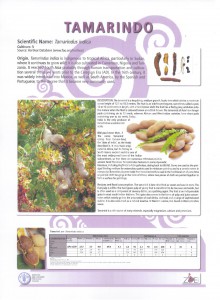The rip-roaring yarn of Indiana Appleseed in the Canyon of Lost Treasure in the Boise Weekly, when posted to Facebook, elicited a reference from Mike Jackson to a BBC Midlands news item about the hundreds of apple varieties in Herefordshire, and the role of Thomas Andrew Knight, president of the RHS from 1811-1838. That sounded really interesting, but the BBC website doesn’t allow me to watch that particular video clip here in Italy. Fortunately, Herefordshire Council has no such compunctions about freeing its content, which allows me to mark the fact that 2011 is Herefordshire’s Year in the Orchard before the end of the year in question, if only just. Having said that, the BBC did have an article back in June on the Great British Apple in connection with another programme, in which “[h]orticulturalist Chris Beardshaw uncovers the British contribution to the history of our most iconic fruit.” And it looks like I’ll be able to watch at least some bits of that.
Nibbles: Gates, Small farmers, Romans in Britain, Ancient Americans, Chocolate, Talks, Climate change, Heirloom apples
- Bill Gates Accepts Hunger Award, Says Focus on Poor Farmers “More Important Than Ever“. Go Bill!
- Small farmer in Mozambique doing well by doing good.
- Ancient Romans drank in South Tyneside. What else was there to do?
- Ancient Americans moved down the coast. That’s where the food was.
- Rewarding excellent chocolate from smallholder farmers.
- Food & Communication: Recipes for Development. IFPRI plays TED on Thursday.
- Climate change adaptation and mitigation: just do it! A. Jarvis comes out storming.
- West African farmers ‘already adapting to climate change’. A. Jarvis picks up his ball and goes home.
- Desperately seeking heirloom apples in Idaho.
FAO fruit art display
 Clearly, I need to learn to stay on things at least a beat longer. Watching this made me seasick, and I knew what was coming. Anyway, the display is in FAO’s Flag Room. The posters (and accompanying fact sheets) are from FAO’s Nutrition and Consumer Protection Division and cite the Hortivar Database, which is a new one one me. And no, baobab wasn’t there.
Clearly, I need to learn to stay on things at least a beat longer. Watching this made me seasick, and I knew what was coming. Anyway, the display is in FAO’s Flag Room. The posters (and accompanying fact sheets) are from FAO’s Nutrition and Consumer Protection Division and cite the Hortivar Database, which is a new one one me. And no, baobab wasn’t there.
Nibbles: Bioinformatics, Extension, Apples, Potatoes, Research, Cacao genebank, Cassava hope, Rice and Striga
- Bioinformatics for Dummies. Not that anyone I know needs it.
- Are there simpler ways to close the yield gaps in developing countries? Indeed, there are, but they’re not very sexy.
- And speaking of low-hanging fruit: How the apple took over the planet.
- Tuber diversity. Miss Hathorn is showing off the progeny of some true potato seed. And by true, I also mean truly potato.
- USDA ARS ♥ CGIAR ♥ USDA ARS
- And Trinidad & Tobago ♥ CFC, ICCO and Bioversity.
- Nigeria pins green revolution hopes on cassava. Is it ever a good idea to pin your hopes on just one thing?
- NERICA’s Striga problem deconstructed.
Nibbles: Bourdeix, Early ag, Amaranthus in beer
- Dr Roland Bourdeix is the new COGENT Coordinator.
- Early American hunter-gatherers ate maize.
- Dogfish Head crowdsources a new beer. And it’s got NUS. Rejoice.